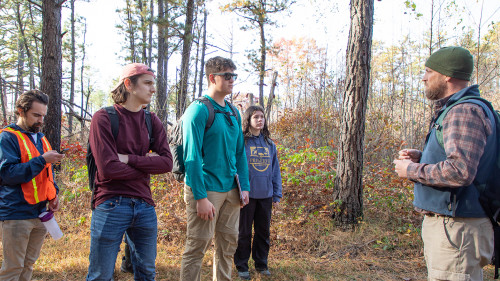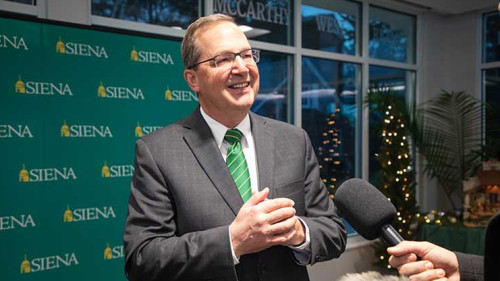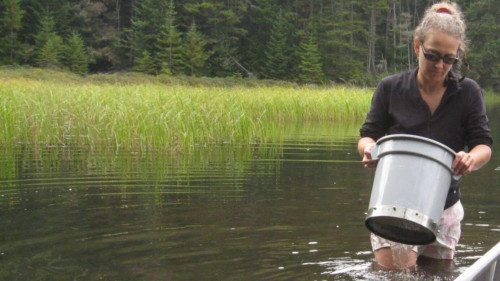
Jessica Dupont ’22 has been passionately interested in sustainability issues since she was in high school. Her efforts to raise awareness – and funds – to support sustainability efforts at Siena have culminated in the College signing on to the Billion Dollar Green Challenge.
Colleges across the country are grappling with how to finance urgently needed, but expensive, energy efficiency upgrades on their campuses. To help them achieve significant energy savings through the use of an innovative financing model, the Sustainable Endowments Institute (SEI) created the Billion Dollar Green Challenge to encourage colleges and other nonprofit institutions to invest a combined total of $1 billion in self managed revolving funds that finance energy efficiency improvements.
Siena formally signed on to the Challenge in December, and as a participating school will strive to ultimately reduce its operating expenses and greenhouse gas emissions, while creating regenerating funds for future projects.
“This Challenge shows that sustainability is not just a ‘green’ thing, it’s also about saving money,” said Dupont. “Green initiatives have an excellent return on investment, and now that Siena is part of this effort, it’s possible that we can do so much in the future to protect the environment.”
Siena designated Dupont as its Sustainability Scholar last year, and she has been working on a zero waste plan for the College as part of that role. She has been joined in her efforts by the Siena Green Revolving Fund team, which includes Mairead O’Donnell ’23 and MBA student Trajan Artt ’22; Kate Meierdiercks, Ph.D., associate professor and department chair of environmental studies and sciences; James Murtagh, Ph.D., professor of finance; and Rich Tortorici, director of facilities management.
In the application that Dupont and the team submitted to sign on to the Challenge, they explained that Siena’s fund “aims to maximize the operational efficiency of the college while limiting greenhouse gas emissions, reducing resource usage, and engaging the campus community.” The bulk of the fund is dedicated to non-competitive projects that focus on larger utility savings, such as lighting or heat. A small portion will be dedicated to competitive community projects, such as composting or reducing single-use plastics, that may not have a high return on investment, but align with Siena’s long-term sustainability goals.
The College earmarked $25,000 from its general fund, saved though reduced electricity costs during the pandemic shutdown, to seed the green fund. The balance of the $65,000 sign on was collected through a College fundraiser run by Development and External Affairs. Special thanks to the leadership of trustees Ken Raymond and Joanne Maloy '80 for their efforts to help jumpstart the Siena fund. With proper management the fund could grow to $100,000 within five years. Siena can then draw on this account to fund new green initiatives, which will save the College more money, which then gets reinvested.
“This is a collaborative effort across the College,” said Meierdiercks. “Students, faculty, staff – we are all stakeholders. By taking part in the Billion Dollar Challenge Siena is really establishing a commitment to sustainability here on campus, and recognizing how important an investment it is. It will save the College money, improve the environment, and create learning and research opportunities on campus.”
The College’s Sustainability Steering Committee, composed of students, faculty and staff from various departments who work together to support and advance sustainable initiatives on the Siena campus, will oversee the selection of the College’s first non-competitive sustainability project funded by this initiative, with a community project being selected after reviewing proposals.
Dupont and Meierdiercks presented their pitch for Siena to join the Challenge to President Chris Gibson ’86 Ph.D. Student organizers are generally advised by the SEI that it is common to have their proposals rejected initially, so Dupont was braced to go back to the drawing board with her team’s plans.
“President Gibson stopped me halfway through and said the College would absolutely commit to be a part of the Challenge,” she said. “Getting Siena to join the Challenge at first seemed slightly out of reach, but I like to tackle challenges. This is one of the best things I’ve ever done in my life.”

